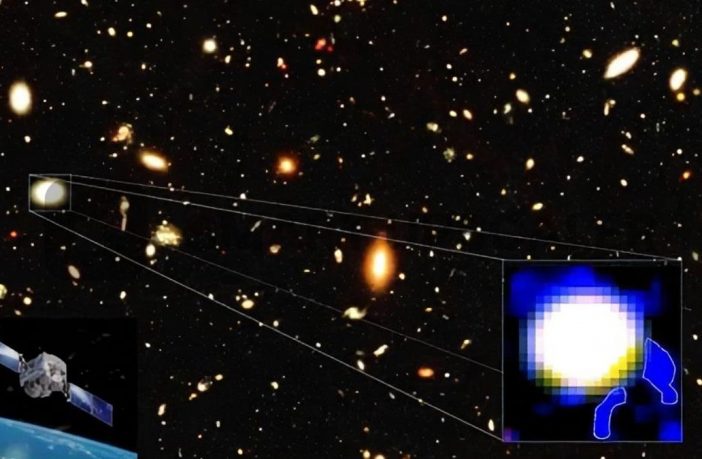
A groundbreaking study has found that new stars are forming beyond visible boundaries about 1.5 to 3.9 billion light-years from Earth, according to a paper by a researcher from Tezpur University. Anshuman Borgohain, the researcher was a member of the team of astronomers from India, the United States and France that carried out the study. He is the main author of the article. “It is still unclear how the dwarf galaxies of the past evolved into those of today. Therefore, capturing their assembly process over the cosmic ages is considered one of the important links to complete image of the formation and evolution of galaxies”. said the research article which was published in the multidisciplinary scientific journal “Nature” this month.
Bruce Elmegreen, one of the main researchers at IBM’s research division in the United States, who also participated in the study, said that the way certain small galaxies like these could have a formation of stars as active was a mystery.
The study was designed using the Ultraviolet Imaging Telescope (UVIT) aboard AstroSat, India’s first space observatory dedicated to multiple wavelengths, according to a statement released by Tezpur University. AstroSat/UVIT’s imaging capabilities have opened up promising avenues in the field of extragalactic astronomy, he added.
Borgohain is working under the joint supervision of Rupjyoti Gogoi of Tezpur University and Professor Kanak Saha of the Pune-based Inter-University Center for Astronomy and Astrophysics, who are co-authors of the paper.
The resolving power of the Ultraviolet Imaging Telescope aboard AstroSat, India’s first dedicated multi-wavelength space observatory, and deep-field UV imaging techniques were key to spotting these very young, faint and large star-forming clusters, Saha said.
The ongoing work is inspiring young researchers in the country as it uses data from India’s indigenous AstroSat satellite, Gogoi said.
“Discovering such unseen phenomena in these distant dwarf galaxies is just another piece of the puzzle and a glimpse into the unknown that new cutting-edge observatories are beginning to show and have to offer in the near future,” said the university. Vice Chancellor Vinod K Jain said.
Tech




